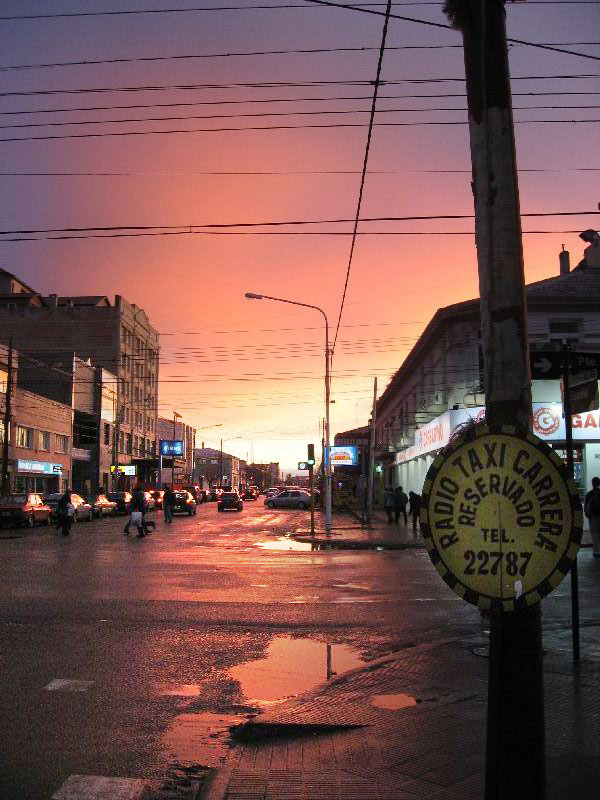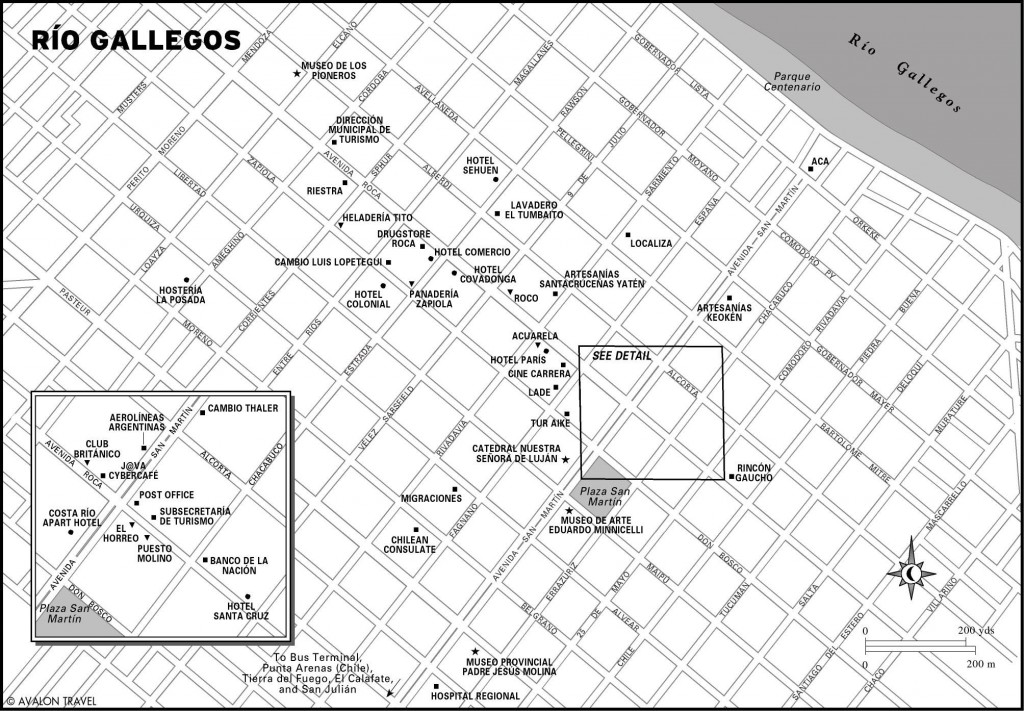Travelers often dismiss windy
Río Gallegos as merely a port and service center for Anglo-Argentine wool
estancias (ranches) and, more recently, the petroleum industry. Dating from 1885, near continental Argentina’s southern tip, it has a handful of museums, historical landmarks, and other distinctive Magellanic buildings, and a handsomely redeveloped waterfront. It’s also the gateway to one of the continent’s largest penguin colonies and several historic
estancias open to visitors. It’s no longer the main gateway to El Calafate since construction of the new international airport there, but travelers bound for
Punta Arenas (Chile) and
Tierra del Fuego may have to spend the night here.
Dating from 1885, near continental Argentina’s southern tip, it has a handful of museums, historical landmarks, and other distinctive Magellanic buildings, and a handsomely redeveloped waterfront.Río Gallegos (pop. 100,000) is 780 kilometers south of Comodoro Rivadavia and 360 kilometers south of Puerto San Julián via RN 3, and 67 kilometers north of the Chilean border post of Monte Aymond. From Monte Aymond it’s another 196 kilometers to Punta Arenas or, alternatively, 571 kilometers to Ushuaia, Tierra del Fuego (including a ferry crossing at Primera Angostura). It’s 305 kilometers southeast of El Calafate via RN3, RP5, RN40, andR P11, all paved. The city’s main thoroughfare, Avenida Roca, was renamed as Avenida Presidente Doctor Néstor C. Kirchner, only a few days after the Gallegos-born former president’s death in 2010, in a political decision that has not pleased everyone.

Street in Río Gallegos after the rain. Photo © Jon Hadley, licensed Creative Commons Attribution.
Sights
Opposite Plaza San Martín, the Catedral Nuestra Señora de Luján (1899) was the work of Salesian priest Juan Bernabé, who was also responsible for the cathedrals of Punta Arenas and Ushuaia. Like other pioneer buildings, it reflects the wood-framed, metal-clad Magellanic style.
On the plaza’s south side, the Museo de Arte Eduardo Minnicelli (Maipú 13, tel. 02966/43-6323, 8am-7pm Tues.-Fri., 3pm-7pm Sat.- Sun. and holidays, closed Dec. 20-Feb. 10, free) showcases provincial artists such as its namesake sculptor.

Río Gallegos
Three blocks south, the comprehensive Museo Provincial Padre Jesús Molina (Ramón y Cajal 51, tel. 02966/42-3290, [email protected], 10am-5pm Mon.-Fri., noon-9pm Sat.-Sun. and holidays, free) holds material on geology, paleontology, natural history, ethnology, and local history, including a good photographic collection.
In a pioneer house that belonged to Arthur and Victor Fenton, the city’s first physicians, the Museo de los Pioneros (Elcano and Alberdi, tel. 02966/43-7763, [email protected], 10am-7:30pm daily in summer, closing as early as 6pm in winter, free) documents southern Patagonia’s early settlers. A guide may explain the details in English.
The late president Kirchner’s family tomb is becoming something of a pilgrimage site at the Cementerio Municipal (Av. Beccar and Tucumán), southwest of downtown, though it appears to be deteriorating after shoddy construction.
Excerpted from the Fourth Edition of Moon Patagonia.

